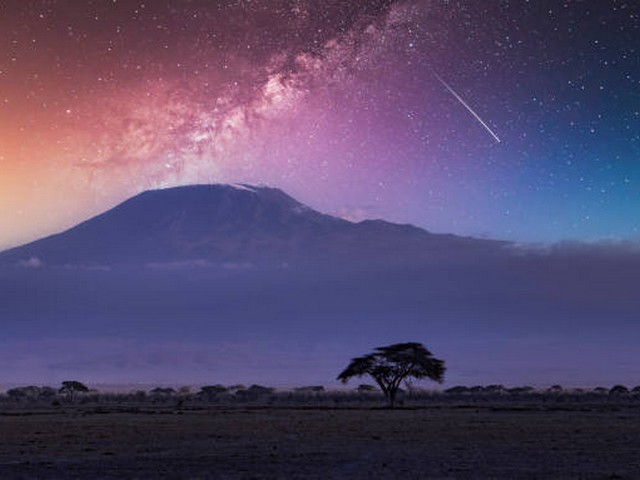How To Respect Wildlife On Your Kilimanjaro Trek
Introductory Thoughts from Kilimanjaro Centre for Trekking and Ecotourism (KCTE)
At the Kilimanjaro Centre for Trekking and Ecotourism (KCTE), we are privileged to guide adventurers like you through one of the world’s most iconic and breathtaking landscapes. Climbing Mount Kilimanjaro offers not just a physical challenge but an intimate encounter with nature’s wonders. It’s an opportunity to step into a vibrant ecosystem that is home to a fascinating array of wildlife. However, these encounters come with a profound responsibility. Respecting wildlife during your Kilimanjaro trek is not just a courtesy; it’s essential for the preservation of this magnificent mountain. In this blog post, we share essential tips on how to appreciate and respect the wildlife you will meet on your journey, ensuring a harmonious and enriching trekking experience.
Understanding Kilimanjaro’s Ecosystem
The Rich Biodiversity of Kilimanjaro
Kilimanjaro is more than just a towering peak; it’s a mosaic of ecological zones, each with its unique flora and fauna. From the lush rainforests at its base to the alpine deserts nearer the summit, Kilimanjaro hosts diverse species that are adapted to varying conditions. This mountain is home to elusive elephants, majestic lions, vibrant birds, and delicate insects, each playing a vital role in the ecological balance.
Why Respecting Wildlife Matters
The survival of these species and the health of the ecosystem depends on our actions. As trekkers, it is our responsibility to minimize our impact and allow these creatures to thrive in their natural habitats. By respecting wildlife, we contribute to conservation efforts and ensure that future generations can also marvel at Kilimanjaro’s natural heritage.
Guidelines for Wildlife Respect on Kilimanjaro
Observe from a Distance
One of the golden rules of wildlife interaction is to keep a respectful distance. Always use binoculars or a zoom lens to view and photograph animals without disrupting them. Getting too close can cause stress and alter their natural behaviors, such as feeding, nesting, or mating.
Follow the Path
While trekking, stick to the designated trails. Straying off the path can lead to habitat destruction and increases the likelihood of disturbing wildlife. Our guides at KCTE are trained to keep you on approved routes that balance scenic views with safety and conservation.
Quiet Presence
Loud noises can frighten wildlife, driving them away from their feeding or nesting areas. Maintain a quiet demeanor and speak in hushed tones. The sounds of nature are also part of the Kilimanjaro experience — listening can be as rewarding as watching.
No Feeding
Feeding wildlife disrupts their natural diet and can lead to health problems or unnatural dependence on human-provided food. Keep all snacks and meals within your group, and secure your food to avoid attracting animals.
Litter-Free Trekking
Dispose of all waste properly by carrying it with you until it can be properly discarded in designated areas. Even organic waste, such as fruit peels or nuts, can affect the dietary habits of animals or introduce non-native species to the environment.
Respectful Photography
When photographing wildlife, avoid using flash as it can startle and cause distress to animals. Always prioritize the welfare of the animal over getting the perfect shot.
The Role of Tour Operators in Wildlife Conservation
At KCTE, we believe that tour operators play a crucial role in conservation. We educate our clients on best practices for wildlife interaction and actively participate in local conservation initiatives. By choosing to trek with KCTE, you support these efforts and contribute directly to the sustainability of Kilimanjaro’s ecosystem.
Call to Action: Join Us for an Enlightening Journey
Embarking on a Kilimanjaro trek with KCTE is not just a journey to the roof of Africa — it’s a step towards understanding and preserving the natural world. We invite you to experience Kilimanjaro in a manner that respects its wildlife and contributes to the conservation of this unique environment.
FAQs About Wildlife and Trekking on Kilimanjaro
What types of wildlife might I see on a Kilimanjaro trek?
Depending on your trekking route and the time of year, you may encounter various bird species, monkeys, smaller mammals, and possibly larger animals like elephants or leopards in the surrounding areas.
Is it safe to trek near wildlife?
Yes, it is safe as long as you follow the guidelines provided by your guides. Our KCTE experts are trained to ensure your safety and the safety of the animals.
How can I prepare for a responsible trek?
Educate yourself about the wildlife and environment of Kilimanjaro, pack eco-friendly supplies, and choose a responsible tour operator like KCTE.
Can my actions really make a difference to wildlife conservation?
Absolutely! Every respectful encounter sets a precedent for conservation and helps promote a culture of respect and mindfulness among fellow trekkers.
As you prepare for your Kilimanjaro adventure, remember that respecting wildlife is integral to the experience. Book your climb with Kilimanjaro Centre for Trekking and Ecotourism (KCTE), and join us in our commitment to preserving the beauty and integrity of Kilimanjaro. Together, we can ensure that the roof of Africa remains a vibrant and thriving ecosystem for generations to come.




